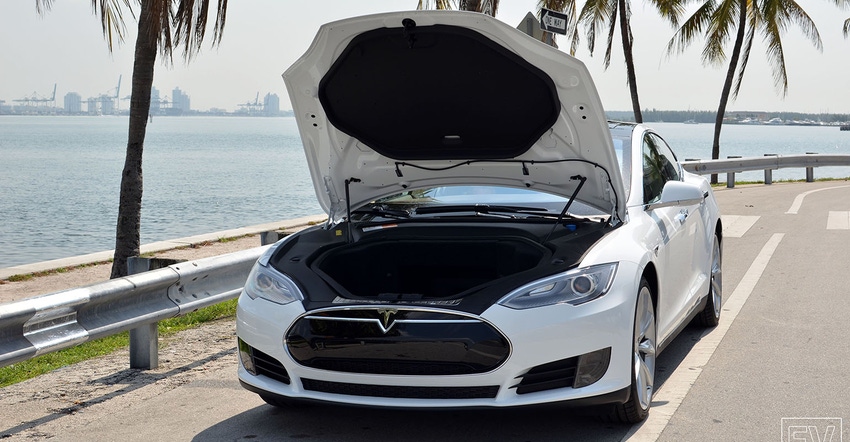LyondellBasell Gets Down with the ‘Frunk’
The vacant space in electric vehicles where the engine used to sit — the front trunk, or frunk as it is known — provides storage functionality through the deployment of multiple plastic solutions.
September 12, 2023

As the automotive market continues to rapidly evolve toward increased uptake of electric vehicles (EVs), conventional design elements such as an engine in the front of the car are quickly disappearing. Without the need to accommodate the traditional front-mounted engine and auxiliary components, this compartment is being made available for cargo, and is commonly known as a "frunk" (front trunk). While this storage element is not new, more cars (especially EVs) are being designed with this feature.
Given its function, the frunk needs to be designed with materials that deliver structural integrity for heavy loads and impact resistance over a range of end uses and temperature extremes. This application also often requires scratch and mar prevention features to help keep the space free from scuffs and damage to maintain superior aesthetics.
Similar to a traditional trunk, this under-hood storage space features surrounding trim covers, sometimes using soft components to seal the frunk from external environmental elements. An application teardown document published by materials supplier LyondellBasell details some solutions on offer tailored to frunk functionality.
Frunk bin demands structural integrity
When designing a frunk bin, characteristics like durability, dimensional stability, and molded-in-color capability should be considered. However, a key feature to its design is structural integrity. LyondellBasell’s Hifax and Hostacom thermoplastic polyolefins (TPOs) offer stiffness and impact performance across a wide temperature range, along with premium aesthetics and durability.
|
Durability, dimensional stability, and molded-in-color capability are considerations for frunk bin materials. |
Further, Softell soft-touch polypropylene resins based on Catalloy process technology are recommended for applications requiring additional haptic benefits and scratch resistance at low gloss levels.
Frunk bins lacking body, chassis, or other reinforcements need to meet higher structural demands. Here, the Premi-SMC sheet molding compound (SMC) portfolio of glass-fiber-reinforced thermoset solutions can help.
Achieving harmony in trim and cover parts
Trim and cover components must harmonize their appearance with the bin and other exterior components and are subject to frequent user contact. As a result, these parts require high scratch and mar performance to deliver durability and excellent aesthetics. LyondellBasell’s Hostacom portfolio of TPOs and polypropylene (PP) compounds offer cost-effective solutions to meet these demands and can be custom color matched.
|
Trim and cover components must be in harmony with the frunk bin and other exterior components. |
Seals and hiders mind the gap
Gaps arising from mating parts, along with water management functionality and kinematic allowances for hood support mechanisms, can drive the need for seals and hiders. Soft materials, such as Invision thermoplastic elastomers (TPEs), provide abrasion resistance, tear strength, and chemical resistance. Whether used for stand-alone components or in overmolding or two-shot molding processes over the hard trim, the color-matched materials offer a range of flexibility and hardness. Eco-Flex RTPV — a thermoplastic recycled rubber-based TPV — is a potential alternative.
|
Water tightness is critical in sealing the frunk from the outside environment. |
Editor’s note: This article is an edited version of “Application Teardown—Frunk ‘Front Trunk’ Storage” published by LyondellBasell.
About the Author(s)
You May Also Like







